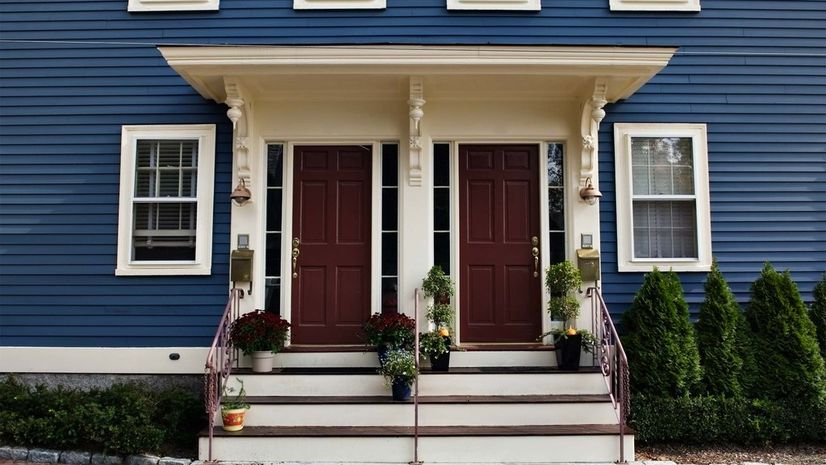

By David M. Greenwald
Executive Editor
In a blog post by Dean Bonner of the PPIC, he noted that, despite efforts by leaders to alleviate the housing crisis, Californians continue to harbor grim views of housing.
Perhaps most importantly, however, “how Californians want the state to respond to this ongoing crisis conflicts with how Californians envision housing for themselves, as insights from recent PPIC Statewide Surveys reveal.”
For example, a top issue of contention is whether the state should ease “environmental and land use restrictions in attempts to build more housing.”
We have talked extensively about issues like CEQA and its misuse in blocking housing.
Bonner notes, “While a majority of Californians want the state to ease these restrictions to increase housing supply, more than four in ten think restrictions should stay the same, even if it increases the cost of new housing.”
But while Californians are divided—even closely divided on this issue, their positions have shifted over time. Back in November 2001, 43 percent of Californians surveyed said they supported easing restrictions, but 53 percent favored maintaining current levels.
Bonner notes that across the state, with the exception of the Bay Area which is divided, most residents “want restrictions eased to help with the housing shortage.” He also noted “renters are much more likely to support easing restrictions than homeowners—although homeowners are divided on the issue.”
These opinions on environmental and land use restrictions mirror how Californians feel about reducing state regulations by changing CEQA—the California Environmental Quality Act.
The number is nearly 60 percent of Californians now favor “changing CEQA regulations as a way to make housing more affordable; support for such changes is also widespread at half or more across parties and regions.”
Breaking out the numbers, overall 55-44 favor easing restrictions. Perhaps it is noteworthy that among Democrats that number is 48-51 the other way. That number should be important to flag, because it suggests a source of paralysis with Democrats being nearly evenly split on this issue and yet in control of the legislature and most levers of government.
On the other hand, by wide margins Republicans 64-35 and Independents 60-39 favor easing land use and environmental restrictions.
Homeowners are evenly split 49-50 in opposition to easing restrictions, while renters 62-37 strongly support them.
Californians also support new requirements for affordable housing by a fairly wide margin.
“Nearly six in ten Californians think the state should require local government to build their ‘fair share’ of new housing that is affordable for the workforce in the region,” Bonner writes.
At the same time, “four in ten Californians say that local governments should decide how much and what kinds of new housing to build in their communities, rather than legislators in Sacramento.”
Here it is Democrats and Independents who want more action by the state legislature while Republicans believe local government should set housing policy.
Bonner notes, “Homeowners are divided, but renters overwhelmingly support a requirement to build affordable housing and do not think localities should determine the kinds of housing built.”
Looking at the numbers, 59-41 believe that the state rather than localities should require affordable housing.
Democrats favor it 67-33, Independents favor it 63-37 but Republicans oppose it 36-67.
Homeowners are split 50-49 in favor, but renters support it 69-31.
Finally, and perhaps most importantly, “Even as Californians insist they want affordable housing to be available, their own housing preferences contradict this demand. People prefer single-family homes over condos or townhomes by an overwhelming majority—even if they need to drive a car to commute and get around locally.”
This is part of the point I have been making about the need for single-family housing.
Bonner notes, “Just three in ten would choose a condo or townhome that is convenient to public transit.”
This holds across regions and demographics—although there is some variation.
Looking at the numbers, 71 percent of all adults would prefer to live in a single-family detached home. I would argue that is part of what is driving the affordability crisis.
While it’s true that this holds across parties, it is important to note that 88 percent of Republicans versus 64 percent of Democrats (71 percent of Independents) prefer single-family detached. That is substantial variation.
The same is true across regions, with the Bay Area *just* showing 61 percent support but the Inland Empire at 83 percent and the rest of the state in the 70s.
Homeowners naturally are strongly in support of single-family detached homes at 79 percent, but that drops to 61 percent for renters.
These numbers demonstrate a few important features.
First, even with fairly broad splits, if your opposition levels are in the 40s, the issue is going to be contentious, especially if the positions are strongly held.
Second, there is an overall support—but it’s narrow—for easing restrictions on housing, there is broader support for affordable housing. The issues that figure to be most controversial are likely single-family housing, although it would probably be helpful to gauge the level of support for single-family neighborhoods rather than just preference to live in a single-family detached home—but that overall number is still pretty telling about what is and is not feasible.







The people that live in Davis that are calling for no more single family homes likely live in just such residences. That’s blatant hypocrisy. I have a six sense to out hypocrisy where ever it exists.
I wholeheartedly agree with your first point. As we saw in yesterday’s Ohio vote where the measure to amend the Ohio Constitution was failing by a margin of 57.01% to 42.99%, the passion of the no voters caused them to get out to the polls much more aggressively than the yes voters. A passionate base of 40% is much more powerful than a less passionate 60%
Your second point illuminates a significant flaw/shortcoming in these polls. Housing isn’t a one size fits all issue. If the question about easing land use and environmental restrictions for $million houses were asked, and then the same question for $750,000 houses, and then the same question for $500,000 houses, I strongly believe you would get very different answers. Similarly, you would almost surely get different answers for rental housing versus ownership housing.
Bottom-line, the devil is in the details.
Here’s to “wishing NIMBYs (and the business interests supporting them) the best”. Good luck with this.
https://www.sfchronicle.com/sf/article/population-exodus-18279600.php
“
Woops – meant to say “YIMBYs”. A totally-different entity.